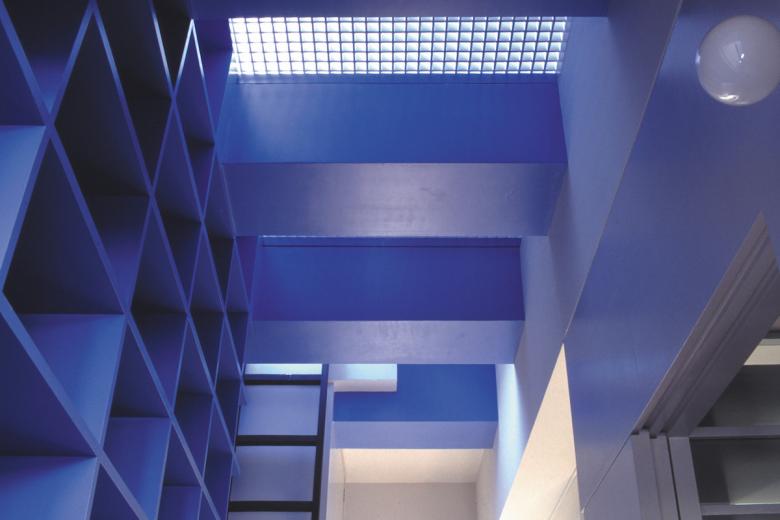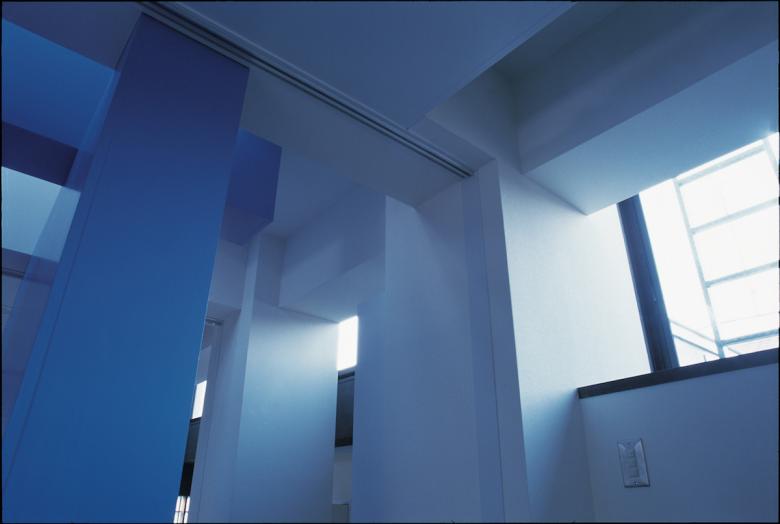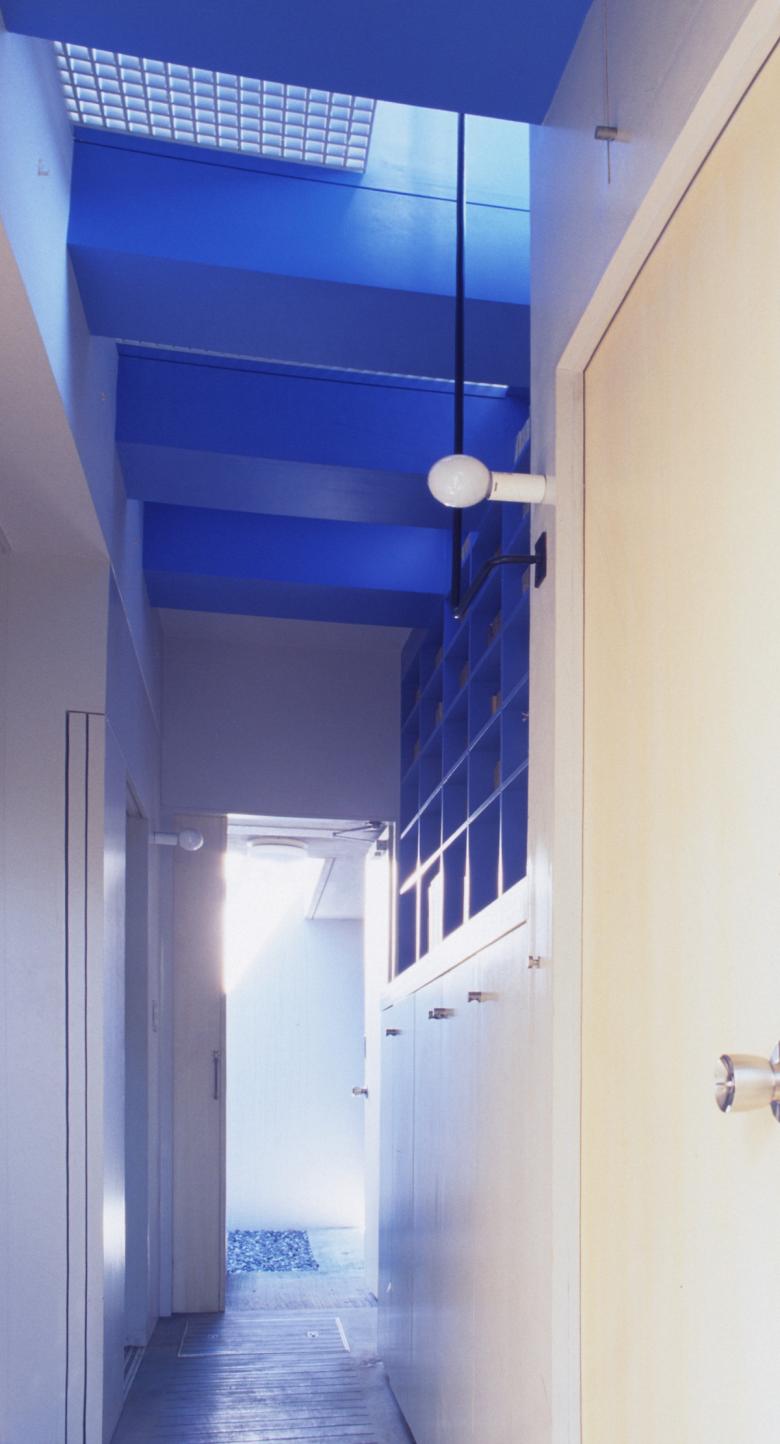
This house is located in a high-density area in Tokyo. A key design consideration was the client's large book collection.
In planning the house, we first established a set of rules regarding color, as follows: The structure of the house was painted in white, the supporting elements in black, and the bookshelves in blue. The supporting elements include bay windows, staircases, handrails, small eaves, etc. Blue for the shelves was chosen because it contrasted with the books and lightened their inherent gravity. White and black were chosen because they are the essential axes of color.
In each space, these rules automatically determined how the interior was finished, with little reference to form or function. As a result, accidental combinations of the three colors occurred and unexpected spaces were created. This helps prevent the banalization of space generated by the invasion of ordinary objects.
In a typical house, bookshelves are placed in a study or installed against the walls of various rooms. In this house, the spaces between bookshelves are used as passageways to connect rooms, while folding doors divide spaces. When these doors are opened, all the rooms and bookshelf areas become one continuous space. If closed the folding door, each room gets independence.
The bookshelf space has other function. It also is used as a vertical passages for the natural light and wind. The floor in the bookshelf space is composed of the FRP grating. So, from the top light window protected with ultraviolet-cutting semi-transparent film, the natural light streams until the first floor via the bookshelf space. On the contrary, the wind elevates from the first floor to the high side window for exhausting the heat and the humidity.
https://www.future-scape.co.jp/g2051engrishspanish/g205303works/g205303worksimage/g2053a16whiteblueblack/g2003a16whiteblueblackeg.html





White Blue Black
Retour à la liste des projets- Lieu
- Mitaka, Tokyo, Japon
- Année
- 1997
- Structural Design
- Sano Structural Design Office




